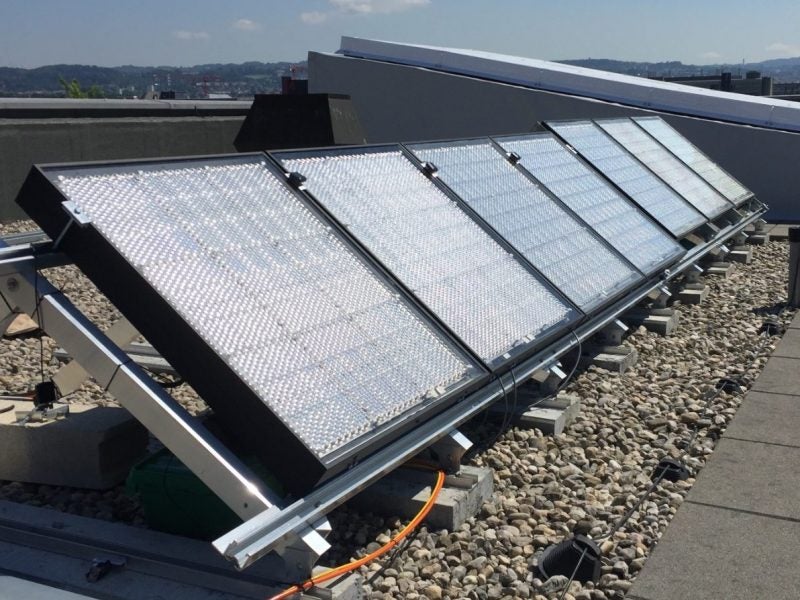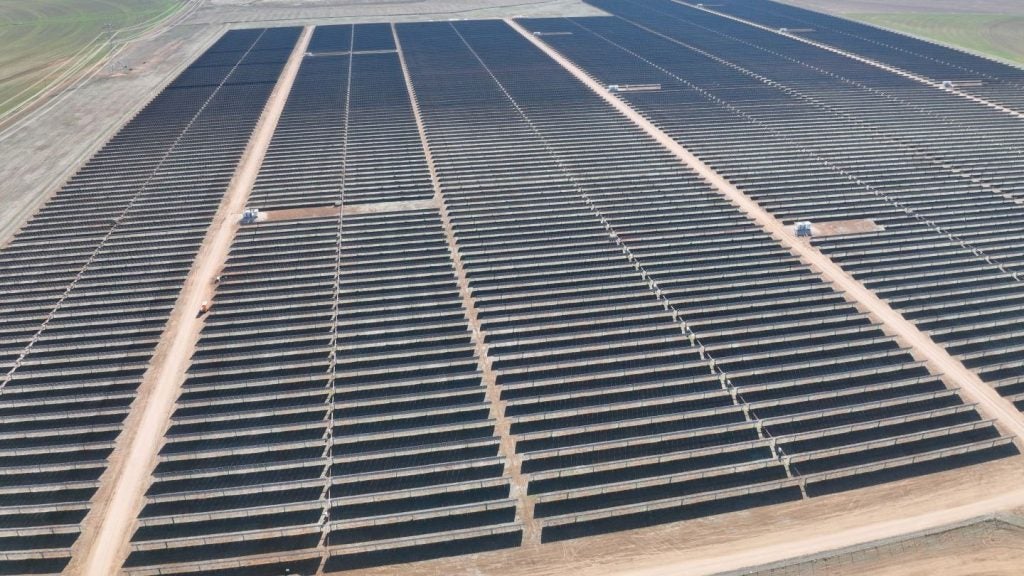
On the one hand, the future of solar power is bright. Greater demand for solar cells has slashed installation prices and encouraged manufacturers to develop ever more efficient technologies, and governments to pass increasingly pro-solar legislation. However, raising the efficiency of solar cells often means a parallel increase in price, and with the technology now so widespread, seemingly minor technological improvements could have significant economic consequences on the global solar industry.
With conventional silicon-based solar cells reaching the limits of their efficiency, the solar industry is looking towards new technologies to improve solar cell performance, from the exciting but unpredictable perovskite compounds to concentrated solar photovoltaic solutions.
Solar is booming but efficiency is lagging behind
The last decade has seen a boom in solar energy, with global solar photovoltaic (PV) energy consumption leaping from below 50TWh in 2010 to over 300TWh in 2016, according to BP. Countries such as China and Germany are leading the way with solar investments, the former installing more solar capacity in 2017 than the rest of the world combined, and the latter relying on solar for 7% of its annual energy needs in 2016.
Meanwhile, the US has introduced legislation to further its solar industry, a clear government commitment to the renewable energy source. The solar Investment Tax Credit (ITC), which introduced a 30% tax break for solar systems installed on residential properties, has contributed to an astonishing growth of 8,600% in the US solar industry, since its enacting in 2006. These three regions – Asia Pacific, Europe and Eurasia, and North America – have been largely responsible for the shift, contributing 318TWh of the 2016 global solar PV consumption of 333TWh.
However, this incredible growth has been in spite of solar technology itself remaining relatively inefficient, with cells using crystalline silicon only being 22.3% energy efficient, according to the Fraunhofer Institute, a leading European research organisation. Crystalline silicon is the most commonly-used material in the construction of solar cells, so improving their efficiency could have knock-on effects on the profitability and effectiveness of the solar industry as a whole, although this could be challenging; a Fraunhofer experiment to improve the efficiency of crystalline silicon cells only yielded an improvement of 0.7% over the duration of 2016.
How well do you really know your competitors?
Access the most comprehensive Company Profiles on the market, powered by GlobalData. Save hours of research. Gain competitive edge.

Thank you!
Your download email will arrive shortly
Not ready to buy yet? Download a free sample
We are confident about the unique quality of our Company Profiles. However, we want you to make the most beneficial decision for your business, so we offer a free sample that you can download by submitting the below form
By GlobalDataSome of the world’s largest companies are investing heavily in improving solar efficiency, with Spectrolab, a subsidiary of Boeing, producing the world’s first terrestrial 40% efficiency solar cell, many of these solutions are too specialised for everyday use; the majority of Spectrolab’s cells, for instance, are used in solar facilities in space. However, Spectrolab’s record-breaking panel takes advantage of a process known as concentrated solar photovoltaic (CPV), the principles of which can be applied to smaller cells to improve efficiency across the industry.
Concentrating light to create high efficiency solar cells
“Our technology, our modules, provide more electricity, or a higher energy density, allowing you to lower electricity costs over the lifetime of the installation,” said David Schuppisser, chief business officer of Swiss start-up Insolight, which aims to cut the costs of solar installation without compromising on energy efficiency. The company’s panels combine two technologies: CPV systems and a miniaturised tracking system typically used in the utilities industries. This latter system is integrated into the body of the panel, enabling the panel to shift to follow the arc of the sun, maximising the amount of the panel that is in contact with the sun’s rays.
“What we do is we take existing high-efficiency solar cells and concentrate the light onto the high-efficiency solar cells with optics,” he said. “Just talking about efficiency, the solution has been demonstrated at 29% efficiency, which has been validated by the Polytechnic University of Madrid.
“This is much higher than what’s currently available in conventional panels, which are between 18% and 22% efficient.”
By combining existing technologies into a single product, the company also makes its panels more versatile and easy to install into existing infrastructure. Insolight’s panels include an industry-standard silicon panel as a back pane, so additional assembly steps, that install the CPV technology and micro-tracking system, can be added to an existing solar panel assembly line. This flexibility has made it easy for Insolight to pitch its panels to key industrial players, who have backed the start-up in the short-term and will ideally be among its beneficiaries in the long-term.
“Recently we’ve assembled a consortium of industrial partners and research institutes around our technology and mobilised significant funding. We now have a clear roadmap to build a pilot assembly plant and then scale up to mass scale production,” said Schuppisser. While Insolight will target the rooftop market first, in both residential and commercial sectors, he said that in the future, there would be no reason as to why the solution could not be applied to the utilities and industrial environments that initially influenced the technology.
The nature of the technology also adds an element of future-proofing to the panels, as their built-in flexibility will enable them to easily accommodate new technological innovations.
“[New technologies] could potentially be integrated into the module, because the efficiency boost that you gain from concentration is a fundamental physical law,” said Schuppisser. “So we’re not competing with the upcoming cell-level technologies, because we can always add our efficiency boost to them.”
“As our solution builds on existing technologies, it will remain competitive in the future because it can integrate the latest developments in silicon cells and multi-junction technologies and even potential future upcoming ones such as perovskites.”
Perovskite potential, if the material can be tamed
Perovskites are one of the most exciting technologies to affect the solar industry, offering an ideal combination of lower production costs and higher conversion efficiencies. Perovskites are compounds that share a crystal structure with calcium titanium oxide, an inorganic compound whose structure is well-suited to use in solar panels, as it boasts a broader absorption spectrum that conventional materials. A number of their other characteristics, such as flexibility and low mass, are attractive from a manufacturing perspective as they can help keep production costs low, and enable the panels to be used in a number of environments.
However, the development of perovskite cells has been limited due to another set of the materials’ characteristics: these cells degrade rapidly when exposed to moisture, making them inappropriate for use in humid environments. Additionally, the materials typically used in their construction, including gold and lead, are rare and potentially toxic, completely undermining the cells’ potential as a source of cheap, clean energy.
Researchers from the Massachusetts Institute of Technology, however, have been working on a solution since 2017, essentially a combination of traditional silicon-based solar cells and perovskites. The introduction of perovskites introduces a second “bandgap”, the limit beyond which the cell can no longer convert solar energy to electricity; one of the key limitations to silicon cells is the relatively low theoretical bandgap of 1.34 electron volts (eV), while 90% of solar cells use silicon with a bandgap of just 1.1eV.
The researchers have developed a halide-based perovskite that combines organic and inorganic materials, which will function as the cell’s top later, while the bottom later is a conventional silicon-based panel. The team estimate that the technology could be refined to provide an energy efficiency of 39%, a figure close to that of Spectrolab’s specialised technology, but ideally with lower production costs.
With similar research being done at the University of Toledo, Eindhoven University of Technology and the University of Bath, and British-based Oxford PV aiming to commercially develop both perovskite and perovskite-silicon panels, the compound could be the key to improving solar cell efficiency across the world.








